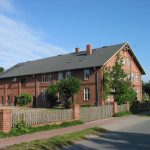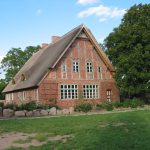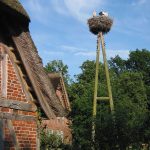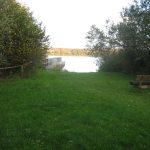Dechow, Mecklenburg-Western Pomerania, Germany
The municipality of Dechow is situated in the planning area Western Pomerania and belongs to the Rehna authorities. It is zoned as a tourism development area and has a natural suitability for agriculture. The locality has 234 inhabit ants including nearly 100 children and teenagers, possibly the youngest village community in this years’ competition.
Until 1945 Dechow had been part of the duchy Lauenburg (Schleswig-Holstein). When the course of the border in the Schaalsee Lake region was re-regulated through the „Barber-Lyashenko Agreement“ the locality became part of Mecklenburg and therefore part of the Soviet occupation zone. All inhabitants except two families left the village, whereas many refugees, mainly from the Sudeten area settled down. With the construction of the Wall in 1961 the locality was isolated once again. It was now in the restricted area, only a few kilometres way from the German-German border. The fall of the Wall in 1989 created new perspectives. Since 90 percent of the ownership issues remained unclear, the development of the locality was delayed until the end of the 90s.
The constructive mix of old inhabitants and new settlers (some 50 percent), the huge willingness to create the future of the village on a new base and often in an unconventional way and the continuous joint thinking about development issues including a lot of technical knowledge let Dechow appear as a locality that catches up on its lost past in record time, while at the same time creating sustainable structures. As a motto, the population sees the image of a „concept of a living village“.
The declining pub in the core of the locality was turned into a multifunctional village hall and today serves as a meet ing point and place of culture. The neighbouring, already disintegrated stables have been re-erected and build into a hostel for youth groups and tourists run on an honorary basis. The project was supplemented by a museum of natural history, which was planned and built by the villagers and is very attractive from a pedagogical point of view. Here, the village shows its links to the UNESCO Biosphere Park Schaalsee, with conditions are seen as an opportunity rather than a restriction for further developments. The future of the locality lies in soft tourism, promoted and integrated in a smart way.
Dechow has still old building substance worthy of being conserved, partly half-timbered houses. The consciousness for its value is high and mirrored in the statutes for construction. At the same time the community and committed citizens endeavour to strengthen the understanding of such old monuments within the village. The pleasant situation in a beautiful recreational area for the nearby areas, the social togetherness and the hetero geneous, quite young village community and the high commitment for engagement in associations and community have released remarkable powers in Dechow during the past ten to fifteen years and started comprehensive and sustainable development.
In spite of unfavourable preconditions, during the past decade, the concept of a living village has been followed in a creative way and implemented step by step.
Evaluated: 2008







